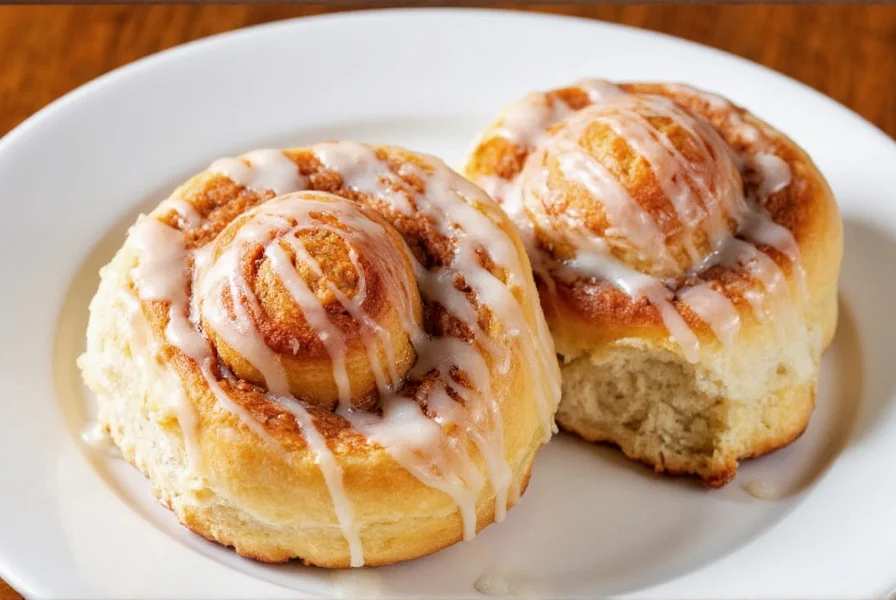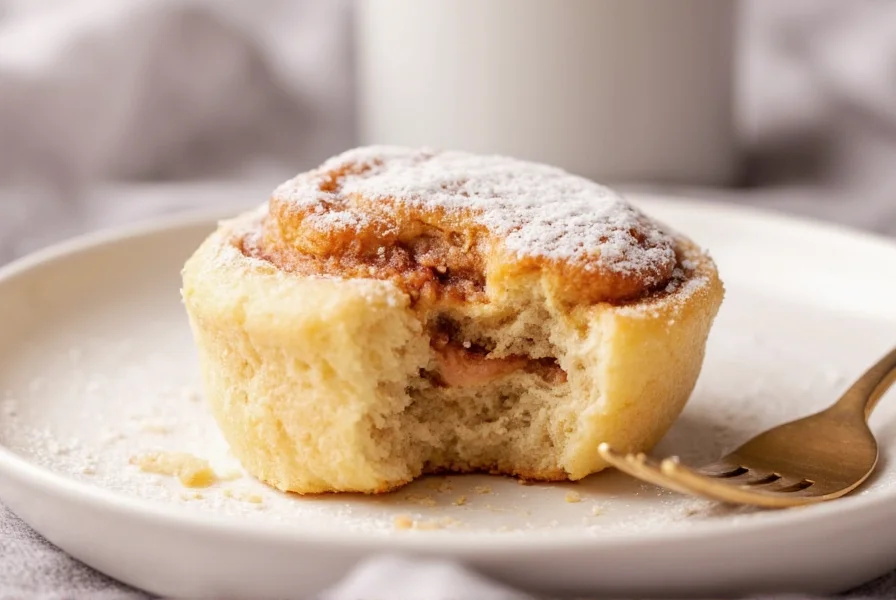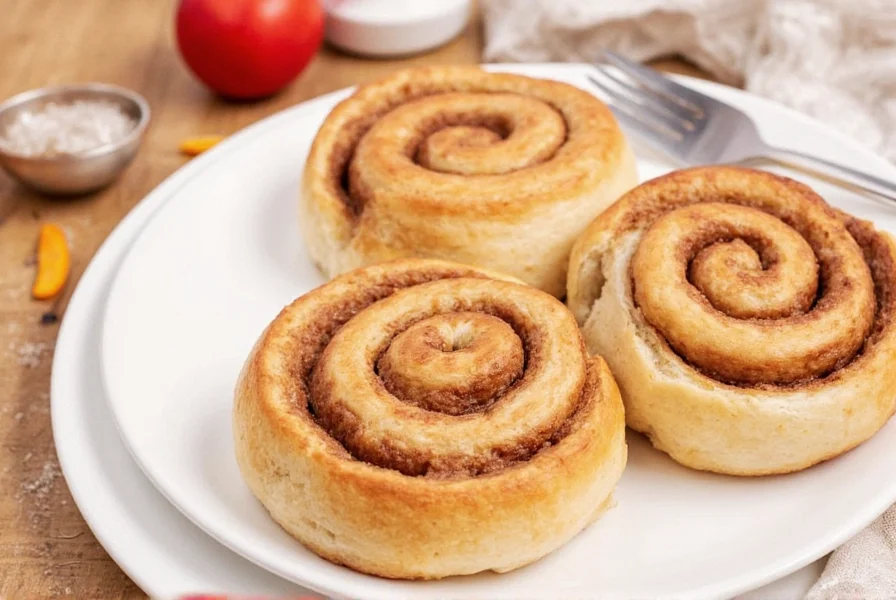The best cinnamon rolls feature a perfectly balanced combination of soft, fluffy yeast dough, a generously spiced cinnamon-sugar-butter filling with the ideal cinnamon-to-sugar ratio (typically 2-3 tablespoons of cinnamon per cup of sugar), and a complementary icing that enhances rather than overwhelms the warm spices. Professional bakers agree that proper dough hydration (70-75%), adequate proofing time, and using high-quality Saigon cinnamon create the most exceptional homemade cinnamon rolls.
When searching for the best cinnamon rolls recipe for beginners or aiming to perfect your baking technique, understanding the science behind each component transforms good pastries into extraordinary ones. Cinnamon rolls represent one of America's most beloved comfort foods, with annual consumption exceeding 300 million rolls nationwide according to bakery industry reports. The difference between mediocre and exceptional cinnamon rolls lies not in complexity, but in precise attention to fundamental baking principles.
Essential Components of Perfect Cinnamon Rolls
Creating the best homemade cinnamon rolls with soft fluffy texture requires mastery of three critical elements: the dough, the filling, and the icing. Each component must work in harmony to deliver that signature melt-in-your-mouth experience.
Dough Fundamentals
The foundation of the best cinnamon rolls that stay soft for days begins with properly hydrated dough. Professional pastry chefs recommend a hydration level of 70-75% (meaning 70-75g of liquid per 100g of flour). This ratio creates steam during baking that produces the characteristic light, airy layers without becoming tough.
| Dough Component | Professional Recommendation | Common Mistake |
|---|---|---|
| Yeast Activation | 105-115°F liquid temperature | Using water too hot (kills yeast) |
| Proofing Time | 1.5-2 hours at 75-80°F | Rushing the process (dense rolls) |
| Flour Type | Bread flour for structure | All-purpose flour (less chew) |
| Fat Content | Unsalted butter at room temperature | Cold butter (uneven distribution) |
For the best cinnamon rolls with no yeast taste, allow your dough to rise slowly in the refrigerator overnight. This cold fermentation develops complex flavors while preventing that undesirable yeasty aftertaste that often plagues quick-rise recipes.

Filling Perfection
The filling represents the heart of the best cinnamon roll recipe with brown sugar. While traditional recipes use white sugar, incorporating brown sugar (particularly dark brown) creates a richer, more complex flavor profile with notes of caramel. The ideal ratio combines 1 cup of sugar (½ white, ½ brown) with 2-3 tablespoons of high-quality Saigon cinnamon.
"Many home bakers underestimate the importance of butter temperature in the filling," explains Maria Chen, award-winning pastry chef and author of Artisan Bread Simplified. "Room temperature butter creates a spreadable paste that distributes evenly without tearing the dough. Melted butter sinks to the bottom, creating greasy pockets rather than that signature marbled swirl."
Icing Considerations
While cream cheese frosting remains popular, the best cinnamon rolls with simple vanilla icing often prove more versatile. A balanced icing should complement, not dominate, the warm spices. The professional standard uses a 3:1 ratio of powdered sugar to liquid (milk or cream), with just enough flavoring to enhance.
Step-by-Step Guide to Baking Excellence
Follow these evidence-based techniques to achieve the best cinnamon rolls from scratch every time:
Dough Preparation
- Warm milk to 110°F and dissolve yeast with 1 tsp sugar; wait 5-10 minutes until foamy
- Mix dry ingredients separately (flour, remaining sugar, salt)
- Combine wet and dry ingredients with room temperature butter
- Knead 8-10 minutes until smooth and elastic (windowpane test)
- Cover and proof at room temperature until doubled (1.5-2 hours)
Rolling and Cutting Technique
"The secret to the best cinnamon rolls with perfect swirls lies in how you roll them," notes Chen. "After spreading your filling evenly to within ½ inch of the edges, start rolling from the long side with gentle but firm pressure. Use a sharp serrated knife or unflavored dental floss to cut portions—this prevents squishing the delicate layers."
Baking Variables
Temperature control proves critical for the best cinnamon rolls that aren't dry. Bake at 350°F for 22-28 minutes until golden brown. Insert an instant-read thermometer into the center—it should register 190°F for optimal moisture retention. Overbaking by just 3-5 minutes can reduce moisture content by 15-20%, creating dry, crumbly rolls.

Common Mistakes and Solutions
Avoid these pitfalls that prevent the best cinnamon rolls for holiday breakfast from reaching their potential:
- Under-proofed dough: Results in dense, chewy rolls. Solution: Allow dough to double in size (about 1.5-2 hours at 75°F)
- Over-floured work surface: Creates dry edges that won't seal. Solution: Use minimal flour when rolling
- Incorrect cinnamon type: Regular cinnamon lacks intensity. Solution: Use Saigon or Korintje cinnamon
- Hot icing: Melts into a puddle. Solution: Wait 15 minutes after baking before icing
Variations Worth Trying
While traditional cinnamon rolls represent the best classic cinnamon roll recipe, these variations have gained popularity among baking enthusiasts:
- Brioche cinnamon rolls: Higher butter and egg content creates an exceptionally rich dough
- Overnight cinnamon rolls: Refrigerate shaped rolls for morning baking convenience
- Gluten-free cinnamon rolls: Using xanthan gum and rice flour blends maintains structure
- Vegan cinnamon rolls: Substitute plant-based butter and flax eggs
Storage and Serving Recommendations
To maintain the best cinnamon rolls texture after baking, store cooled rolls in an airtight container at room temperature for up to 3 days. For longer storage, freeze individual rolls on a baking sheet before transferring to freezer bags. Reheat from frozen at 325°F for 12-15 minutes.
Serving temperature significantly impacts the experience. "The ideal serving temperature for the best cinnamon rolls to serve guests is 110-120°F," advises Chen. "This allows the icing to melt slightly into the top layer while keeping the roll structurally sound. Never serve straight from the refrigerator—cold temperatures mute the complex spice notes."
Final Tips for Cinnamon Roll Mastery
Mastering the best cinnamon rolls for beginners and experts alike requires attention to detail but delivers extraordinary results. Remember these final recommendations:
- Use a kitchen scale for precise ingredient measurements
- Maintain consistent room temperature during proofing
- Invest in a quality instant-read thermometer
- Let rolls rest 5 minutes after baking before icing
- Use pure vanilla extract, not imitation
With these evidence-based techniques, you'll consistently produce the best cinnamon rolls that impress family and friends. The perfect cinnamon roll represents more than just a sweet treat—it's the culmination of precise baking science and time-honored tradition working in harmony.
Frequently Asked Questions
What makes cinnamon rolls soft and fluffy instead of dense?
The soft, fluffy texture comes from proper dough hydration (70-75%), adequate proofing time allowing yeast to produce carbon dioxide, and using bread flour which has higher protein content. Over-kneading or under-proofing creates dense rolls. Professional bakers recommend letting dough rise until doubled in size (about 1.5-2 hours at 75°F) for optimal airiness.
Can I make the best cinnamon rolls without a stand mixer?
Yes, you can absolutely make excellent cinnamon rolls by hand. The key is proper kneading technique—8-10 minutes of vigorous kneading on a lightly floured surface until the dough passes the windowpane test (stretches thin without tearing). While a stand mixer simplifies the process, many artisan bakers prefer hand-kneading for better texture control.
Why do my cinnamon rolls sometimes separate from the bottom during baking?
This "slumping" occurs when the filling contains too much liquid butter or when the dough hasn't been properly sealed after rolling. To prevent this, use room temperature (not melted) butter in your filling, leave a ½-inch border when spreading, and pinch the seam firmly before cutting. Chilling the shaped rolls for 15 minutes before baking also helps maintain their structure.
How can I make my cinnamon rolls more flavorful without adding complexity?
For deeper flavor without complicated steps, try these simple enhancements: use dark brown sugar instead of white in your filling, add ¼ teaspoon of cardamom to your cinnamon mixture, let your dough proof overnight in the refrigerator, and use high-quality Saigon cinnamon which has more intense flavor compounds than regular cinnamon. These small changes create noticeably more complex cinnamon rolls.











 浙公网安备
33010002000092号
浙公网安备
33010002000092号 浙B2-20120091-4
浙B2-20120091-4